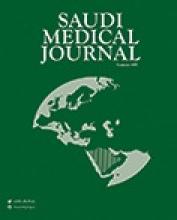Seatbelts reduce mortality of road traffic collisions mainly by reducing the severity of head injuries.1,2 Nevertheless, they can cause specific intra-abdominal and vertebral injuries.2 We found one report in the literature addressing the relationship between anterior dislocation of the restrained shoulder and seatbelts.3 We recently treated a restrained driver and a restrained front-seat passenger who had contra-lateral (mirror) anterior dislocation of the shoulders. Mirror injuries caused by 3-point seatbelts may involve both the driver and the front-seat passenger.4 These injuries are useful in determining whether the patients were wearing seatbelts, and which side they were seated.4 Here, we report 2 rare cases of mirror shoulder dislocations of a driver and front-seat passenger caused by a 3-point seat belt. These cases provide direct evidence that mirror shoulder dislocations can be caused by seatbelts.
A pickup truck driver and a front-seat passenger was hit from the rear side by a speeding 4-wheel sport utility vehicle, and subsequently had a front impact collision with a tree. The driver was seated on the left side, while the front-seat passenger was seated on the right side of the vehicle. Both the driver and front-seat passenger were wearing shoulder-lap (3-point) seatbelts. The diagonal strap passes from the side of the vehicle across the center of the shoulder and chest of the front-seat occupant to the pelvic buckle in the midline. There was no deployment of the air bag. When presented to the Emergency Department, they were fully conscious and hemodynamically stable. The driver had pain and swelling of the left shoulder with limitations in the abduction movement. The head of the humerus can be felt anteriorly. There were no neurological, or vascular injuries of the upper limb. The front-seat passenger had similar findings, but on the right shoulder. No other significant clinical findings were detected through the primary and secondary examination, except for a mild tenderness on the left chest wall of the driver. An x-ray of the right shoulder of the front-seat passenger and left shoulder of the driver showed anterior dislocation of the shoulders with avulsion of the greater humeral tuberosity (Figure 1). Both joints were successfully reduced. No other injury was determined by trauma CT scans except for a fractured left seventh to ninth ribs of the driver. Trauma CT scans confirmed that both shoulders were reduced. Twelve hours after admission, a surgeon performed for both patients a follow-up point-of-care ultrasound of the chest, abdomen, and inferior vena cava using a portable ultrasound machine. It showed that there were no significant abnormal thoracic or abdominal findings. Both patients had successful open reduction and internal fixation of the fractured greater humeral tuberosity within 24-48 hours of admission.
An image showing an antero-posterior plain x-rays of the right shoulder of the front seat passenger (A), and left shoulder of the driver (B) showing anterior dislocation of the shoulder. The head of the humerus overlaps the scapula (arrow heads), and avulsed fracture of greater humeral tuberosity in both patients (white arrow).
There were 2 mechanisms involved in this collision. This includes an acceleration (primary mechanism) when hit from the rear (increasing the speed of the vehicle), and then a sudden deceleration when hitting the tree (secondary mechanism). The shoulder injuries possibly occurred during deceleration. As the car suddenly and completely stopped when hitting the tree, the seat belt, which is also part of the vehicle will abruptly stabilize while the patient will continue to move forward.2,5 Direct pressure on the shoulders may cause shoulder injury. The airbag was not released in our cases. Airbags are known to further reduce the severity of the injury of drivers and front-seat passengers in frontal impact collisions when seatbelts are used.1,2 Alternatively, the shoulder may have externally rotated at the time of collision, and the elbow was flexed in the driving position. A direct hit to the elbow in the direction of the restrained shoulder may have caused the anterior dislocation of the shoulder and avulsion of the greater tuberosity. This explanation is unlikely because the shoulder dislocation occurred in both the driver and front-seat passenger. They had mirror shoulder dislocations caused by a 3-point seat belt. These injuries were even useful in defining the side, in which the vehicle occupant was seated.4
Statistics
Excerpts from the Uniform Requirements for Manuscripts Submitted to Biomedical Journals updated November 2003.
Available from www.icmje.org
Describe statistical methods with enough detail to enable a knowledgeable reader with access to the original data to verify the reported results. When possible, quantify findings and present them with appropriate indicators of measurement error or uncertainty (such as confidence intervals). Avoid relying solely on statistical hypothesis testing, such as the use of P values, which fails to convey important information about effect size. References for the design of the study and statistical methods should be to standard works when possible (with pages stated). Define statistical terms, abbreviations, and most symbols. Specify the computer software used.
Acknowledgment
The authors gratefully acknowledge Dr. Klaus Neidl van Gorkom from the Department of Radiology College of Medicine and Health Sciences, UAE University, Al-Ain, United Arab Emirates for reviewing the radiological image.
Footnotes
Disclosure. Authors have no conflict of interest, and the work was not supported or funded by any drug company.
- Received July 19, 2015.
- Accepted September 22, 2015.
- Copyright: © Saudi Medical Journal
This is an open-access article distributed under the terms of the Creative Commons Attribution-Noncommercial-Share Alike 3.0 Unported, which permits unrestricted use, distribution, and reproduction in any medium, provided the original work is properly cited.







